Final Fantasy d20’s status effects are no different from Pathfinder’s conditions—they temporarily modify aspects of your creature or other beings based on the status effect inflicted. If more than one status effect affects a creature, apply them all. If effects can’t combine, apply the most severe effect.
If an ability that utilizes a status effect doesn’t have a spell level associated with it then take your class level and divide it by 2, or in the case of monsters their HD/2. Use the calculated number as your spell level (caps at 9th).
Harmful Status Effects
Harmful status effects occur during combat from a certain spell or an item, or even an attack. These status effects change the “status” of a party member, or even the entire party itself.
Antagonized

An antagonized creature can only target its antagonist (the one who inflicted the antagonized status effect) with hostile actions. A hostile action is any attack or effect that causes direct harm, applies negative status effects, or otherwise penalizes or hinders a creature.
Additionally, an antagonized creature does not threaten any opponents except its antagonist; it cannot make attacks of opportunity or be used to determine flanking bonuses against other opponents. If the antagonized creature uses an ability that targets multiple creatures, the antagonist must be included among those targets. If the creature uses an area-targeted ability, the antagonist must be within the area of effect.
The antagonized status effect ends if the antagonist becomes helpless, unconscious, or otherwise unable to participate in combat.
On each round after the first, the antagonized creature may attempt a Sense Motive check as a swift action to realize the folly of its actions. This check is opposed by the antagonist’s original Antagonize check (usually an Intimidate skill check). If the antagonized creature succeeds, the status effect immediately ends, but the creature takes a –2 penalty on attack rolls and a –2 penalty to the saving throw DC of its abilities and spells for 1 minute. These penalties do not apply against the antagonist.
Banished
While under this status effect a creature ceases to exist, pausing their ageing, health, and any status currently affecting them. Effects that cause this status are not generally permanent, and when the creature returns they come back the same as when they were initially affected. If the target returns into a space now occupied by another creature, the target is shunted to the nearest available square, taking 1d6 points of damage per 5ft.
Berserk
 This status effect causes the creature to fly into a rage, attacking the nearest enemy creature. Once a target is chosen, the subject charges (or takes the most direct path) and attacks the target with their held weapon at all costs until it dies or until the duration ends. If the subject cannot attack its target within their turn, they instead switch to another enemy creature that is nearest to them (if applicable).
This status effect causes the creature to fly into a rage, attacking the nearest enemy creature. Once a target is chosen, the subject charges (or takes the most direct path) and attacks the target with their held weapon at all costs until it dies or until the duration ends. If the subject cannot attack its target within their turn, they instead switch to another enemy creature that is nearest to them (if applicable).
While under the effects of Berserk, the subject may only utilize move, charge, attack, and full-attack actions in pursuit of and against their target. If the subject possesses any feats that augment the damage of an attack, they are used at every opportunity. The subject’s mind is so clouded by unyielding rage that they forsake using ranged weapons (bows, guns, power weapons, etc) properly, and instead opt to either use them as improvised melee weapons or their bare fists (as an unarmed strike that does not provoke attacks of opportunity). Creatures affected by Berserk do not threaten other creatures besides their target.
Additionally, the subject gains a +2 circumstance bonus to Strength, a -2 penalty to AC, and is immune to fear effects while under the effects of Berserk.
Bleed
 A creature that is taking bleed damage takes the listed amount of damage at the beginning of its turn. If the bleed damage is expressed as a die roll, reroll the damage each round. Bleeding normally continues until the creature dies, but can be stopped by a DC 15 Heal check (as per the Provide First Aid function; a standard action which provokes attacks of opportunity) or through the application of any spell that cures hit point damage (even if the bleed is ability damage). Some bleed effects cause ability damage or even ability drain.
A creature that is taking bleed damage takes the listed amount of damage at the beginning of its turn. If the bleed damage is expressed as a die roll, reroll the damage each round. Bleeding normally continues until the creature dies, but can be stopped by a DC 15 Heal check (as per the Provide First Aid function; a standard action which provokes attacks of opportunity) or through the application of any spell that cures hit point damage (even if the bleed is ability damage). Some bleed effects cause ability damage or even ability drain.
Bleed effects do not stack with each other unless they deal different kinds of damage. When two or more bleed effects deal the same kind of damage, take the worse effect. In this case, ability drain is worse than ability damage.
Blinded
 The creature cannot see. It takes a –2 penalty to Armor Class, loses its Dexterity bonus to AC (if any), and takes a –4 penalty on most Strength– and Dexterity-based skill checks and on opposed Perception skill checks. All checks and activities that rely on vision (such as reading and Perception checks based on sight) automatically fail. All opponents are considered to have total concealment (50% miss chance) against the blinded creature. Blind creatures must make a DC 10 Acrobatics skill check to move faster than half speed. Creatures that fail this check fall prone. creatures who remain blinded for a long time grow accustomed to these drawbacks and can overcome some of them.
The creature cannot see. It takes a –2 penalty to Armor Class, loses its Dexterity bonus to AC (if any), and takes a –4 penalty on most Strength– and Dexterity-based skill checks and on opposed Perception skill checks. All checks and activities that rely on vision (such as reading and Perception checks based on sight) automatically fail. All opponents are considered to have total concealment (50% miss chance) against the blinded creature. Blind creatures must make a DC 10 Acrobatics skill check to move faster than half speed. Creatures that fail this check fall prone. creatures who remain blinded for a long time grow accustomed to these drawbacks and can overcome some of them.
Charmed
Charmed makes a humanoid creature regard you as its trusted friend and ally (treat the target’s attitude as friendly). If the creature is currently being threatened or attacked by you or your allies, however, it receives a +5 bonus on its saving throw.
This status effect does not enable you to control the charmed person as if it were an automaton, but it perceives your words and actions in the most favorable way. You can try to give the subject orders, but you must win an opposed Charisma check to convince it to do anything it wouldn’t ordinarily do. (Retries are not allowed.) An affected creature never obeys suicidal or obviously harmful orders, but it might be convinced that something very dangerous is worth doing. Any act by you or your apparent allies that threatens the charmed person breaks the status effect. You must speak the person’s language to communicate your commands, or else be good at pantomiming.
Confused
 This status effect causes the creature to do random actions. A confused creature’s actions are determined by rolling percentage at the beginning of his turn: 01–25 act normally, 26–50 do nothing but babble incoherently, 51–75 deal 1d8 points of damage + Str modifier to self with item in hand, 76–100 attack nearest creature (for this purpose, a familiar counts as part of the subject’s self). A confused creature that can’t carry out the indicated action does nothing but babble incoherently. Attackers are not at any special advantage when attacking a confused creature. Any confused creature that is attacked automatically attacks its attackers on its next turn, as long as it is still confused when its turn comes. A confused creature does not make attacks of opportunity against any creature that is not already devoted to attacking (either because of its recent action or because it has just been attacked).
This status effect causes the creature to do random actions. A confused creature’s actions are determined by rolling percentage at the beginning of his turn: 01–25 act normally, 26–50 do nothing but babble incoherently, 51–75 deal 1d8 points of damage + Str modifier to self with item in hand, 76–100 attack nearest creature (for this purpose, a familiar counts as part of the subject’s self). A confused creature that can’t carry out the indicated action does nothing but babble incoherently. Attackers are not at any special advantage when attacking a confused creature. Any confused creature that is attacked automatically attacks its attackers on its next turn, as long as it is still confused when its turn comes. A confused creature does not make attacks of opportunity against any creature that is not already devoted to attacking (either because of its recent action or because it has just been attacked).
Cowering
The creature is frozen in fear and can take no actions. A cowering creature takes a –2 penalty to Armor Class and loses his Dexterity bonus (if any).
Cursed
This status effect prohibits the creature from using Supernatural (Su) class features and abilities.
Dazed
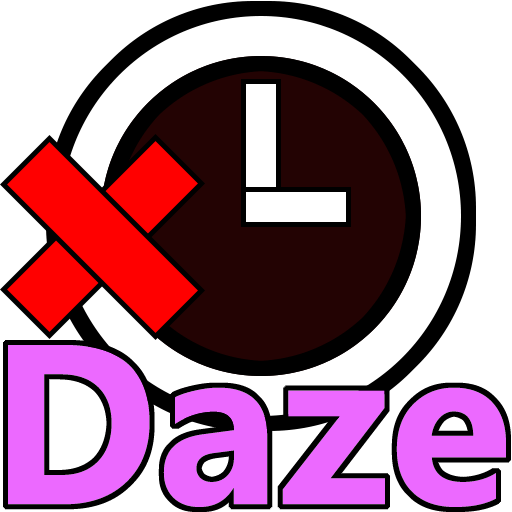 The creature is unable to act normally. A dazed creature can take no actions, but has no penalty to AC. A dazed condition typically lasts 1 round.
The creature is unable to act normally. A dazed creature can take no actions, but has no penalty to AC. A dazed condition typically lasts 1 round.
Dazzled
A bright flash of light causes the creature to be slightly dizzy. creatures that are inflicted with this status effect suffer -1 penalty on attack rolls and Perception checks to see.
Deafened
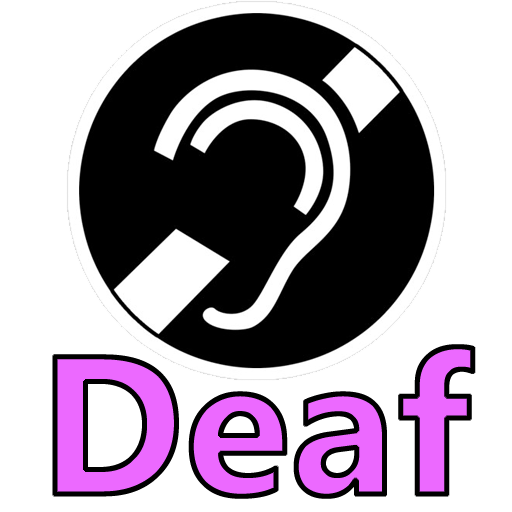 A deafened creature cannot hear. He takes a –4 penalty on initiative checks, automatically fails Perception checks based on sound, takes a –4 penalty on opposed Perception checks, and has a 20% chance of spell failure when casting spells with verbal components. creatures who remain deafened for a long time grow accustomed to these drawbacks and can overcome some of them.
A deafened creature cannot hear. He takes a –4 penalty on initiative checks, automatically fails Perception checks based on sound, takes a –4 penalty on opposed Perception checks, and has a 20% chance of spell failure when casting spells with verbal components. creatures who remain deafened for a long time grow accustomed to these drawbacks and can overcome some of them.
Deprotect
This status effect inflicts the creature with a penalty to armor class, depending on the spell used. Does not stack with other deprotect spells.
Deshell
This status effect inflicts the creature with a penalty to saving throws versus spells, spell-like abilities, and supernatural abilities, depending on the spell used. Does not stack with other deshell spells.
Disabled
This status effect causes the creature to be unable to act normally. A disabled creature can only take move actions. They cannot use free actions, swift actions, immediate actions, or attacks of opportunity. They can still speak, however.
Diseased
This status effect cripples the creature’s ability to heal and be healed. A diseased creature cannot be cured of wounds or healed of any other means until the disease is cured, including Fast Healing and Regeneration. If a creature with this status effect would die and later be brought back to life, they are always resurrected at 1 HP away from death and stabilized, regardless of spell.
Doom
This status effect causes a countdown to start whereupon the creature inflicted dies if not cured of this status effect. The usual duration is 2d4 rounds.
Energy Drained
The creature gains one or more negative levels, which might become permanent. If the subject has at least as many negative levels as Hit Dice, he dies. See Energy Drain and Negative Levels for more information.
Entangled
The creature is ensnared. Being entangled impedes movement, but does not entirely prevent it unless the bonds are anchored to an immobile object or tethered by an opposing force. An entangled creature moves at half speed, cannot run or charge, and takes a –2 penalty on all attack rolls and a –4 penalty to Dexterity. An entangled creature who attempts to cast a spell must make a concentration check (DC 15 + spell level) or lose the spell.
Exhausted
An exhausted creature moves at half speed, cannot run or charge, and takes a –6 penalty to Strength and Dexterity. After 1 hour of complete rest, an exhausted creature becomes fatigued. A fatigued creature becomes exhausted by doing something else that would normally cause fatigue.
Fascinated
A fascinated creature is entranced by a supernatural or spell effect. The creature stands or sits quietly, taking no actions other than to pay attention to the fascinating effect, for as long as the effect lasts. It takes a –4 penalty on skill checks made as reactions, such as Perception checks. Any potential threat, such as a hostile creature approaching, allows the fascinated creature a new saving throw against the fascinating effect. Any obvious threat, such as someone drawing a weapon, casting a spell, or aiming a ranged weapon at the fascinated creature, automatically breaks the effect. A fascinated creature’s ally may shake it free of the spell as a standard action.
Fatigued
A fatigued creature can neither run nor charge and takes a –2 penalty to Strength and Dexterity. Doing anything that would normally cause fatigue causes the fatigued creature to become exhausted. After 8 hours of complete rest, fatigued creatures are no longer fatigued.
Frightened
A frightened creature flees from the source of its fear as best it can. If unable to flee, it may fight. A frightened creature takes a –2 penalty on all attack rolls, saving throws, skill checks, and ability checks. A frightened creature can use special abilities, including spells, to flee; indeed, the creature must use such means if they are the only way to escape. Frightened is like shaken, except that the creature must flee if possible. Panicked is a more extreme state of fear.
Frog
 This status effect causes the creature to be turned into a frog (without the poison). The creature retains his hit points but his size becomes tiny and he is unable to do anything for the duration other than hop around.
This status effect causes the creature to be turned into a frog (without the poison). The creature retains his hit points but his size becomes tiny and he is unable to do anything for the duration other than hop around.
Immobilized
 An immobilized creature cannot move, but may do other actions (attack, cast, etc.), provided those actions do not require him to move.
An immobilized creature cannot move, but may do other actions (attack, cast, etc.), provided those actions do not require him to move.
Imperil
This status effect lowers a creature’s elemental resistance of an element (as described by the spell or ability) by one step (Absorb > Immune > Resist > None > Weakness). Creatures that are reduced from Immune to Resist are assumed to have Resist 20 for that respective element. Creatures with Weakness to an element receive 1.5x damage from that element as well as suffer a -2 penalty from saving throws associated with that element. This status effect stacks with itself, so long as each application is of a different element.
Mini
This status effect causes the creature to shrink to 10% of its total size, effectively becoming Fine size, gaining all the size bonuses and penalties but a miniaturize creature’s physical damage only does 10% of its total damage it can dish out. Spells are unaffected.
Nauseated
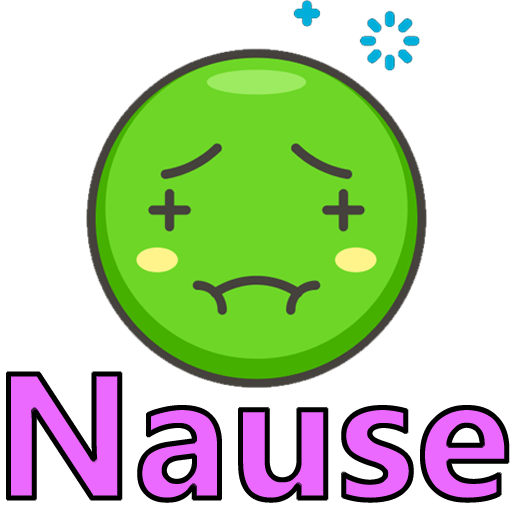 Creatures with the nauseated condition experience stomach distress. Nauseated creatures are unable to attack, cast spells, concentrate on spells, or do anything else requiring attention. The only action such a creature can take is a single move action per turn.
Creatures with the nauseated condition experience stomach distress. Nauseated creatures are unable to attack, cast spells, concentrate on spells, or do anything else requiring attention. The only action such a creature can take is a single move action per turn.
Panicked
A panicked creature must drop anything it holds and flee at top speed from the source of its fear, as well as any other dangers it encounters, along a random path. It can’t take any other actions. In addition, the creature takes a –2 penalty on all saving throws, skill checks, and ability checks. If cornered, a panicked creature cowers and does not attack, typically using the total defense action in combat. A panicked creature can use special abilities, including spells, to flee; indeed, the creature must use such means if they are the only way to escape. Panicked is a more extreme state of fear than shaken or frightened.
Paralyzed
 A paralyzed creature is frozen in place and unable to move or act. A paralyzed creature has effective Dexterity and Strength scores of 0 and is helpless, but can take purely mental actions. A winged creature flying in the air at the time that it becomes paralyzed cannot flap its wings and falls. A paralyzed swimmer can’t swim and may drown. A creature can move through a space occupied by a paralyzed creature—ally or not. Each square occupied by a paralyzed creature, however, counts as 2 squares to move through.
A paralyzed creature is frozen in place and unable to move or act. A paralyzed creature has effective Dexterity and Strength scores of 0 and is helpless, but can take purely mental actions. A winged creature flying in the air at the time that it becomes paralyzed cannot flap its wings and falls. A paralyzed swimmer can’t swim and may drown. A creature can move through a space occupied by a paralyzed creature—ally or not. Each square occupied by a paralyzed creature, however, counts as 2 squares to move through.
Petrification
The flesh of a creature suffering from Petrification turns to stone over the course of a short period of time. The subject is allowed a saving throw for every round this is in effect; the effect worsens if they fail. Once inflicted with Petrification, a successful saving throw means the subject staves off the oncoming effects for that round. While a creature might stave off the effects of Petrification for a short period of time, Petrification effects usually persist until it inevitably consumes them.
Upon failing their first saving throw, the petrification process begins with the subject’s legs becoming petrified. Petrified creatures on this stage cannot use move actions for any sort of ground-based movement.
Upon failing their second saving throw, the subjects arms and upper torso also become petrified. Petrified creatures on this stage cannot use any actions save for talking and using abilities that only require a vocal component. Airborne creatures on this stage immediately fall to the ground, taking falling damage as normal.
Upon failing their third saving throw, the subject’s entire body is turned to stone. The Petrification status effect is removed and is instead replaced with the Statue status effect.
Poisoned
 This status effect typically causes the creature to take 1d6 points of non-elemental damage per round. A poisoned creature takes damage per round until the duration ends or until cured. This is the default effect of poison, any effect that mentions “Poison Status Effect” then it refers to his usage.
This status effect typically causes the creature to take 1d6 points of non-elemental damage per round. A poisoned creature takes damage per round until the duration ends or until cured. This is the default effect of poison, any effect that mentions “Poison Status Effect” then it refers to his usage.
Any Pathfinder poisons such as those inflicted by enemy bite attacks and the like, or those administered such as Belladonna are often called out with a poison.
If something notes “poison” or “poison statuses and effects” on its own it relates to both styles of this status effect, such as the hardy racial trait.
Reversed
This status effect causes the target to take damage from healing spells and effects, including Fast Healing and Regeneration.
Sapped
This status effect causes the target to take non-elemental damage equal to the amount of its HD + its Constitution bonus each round. This damage cannot reduce the creature’s HP below 1.
Shaken
A shaken creature takes a –2 penalty on attack rolls, saving throws, skill checks, and ability checks. Shaken is a less severe state of fear than frightened or panicked.
Sickened
The creature takes a –2 penalty on all attack rolls, weapon damage rolls, saving throws, skill checks, and ability checks.
Silenced
 This status effect causes the creature to be unable to make verbal sounds, including verbal components for spells or songs, or sound-based abilities that require someone’s voice. Casters with the Silent Spell feat can bypass this status effect if used with spells.
This status effect causes the creature to be unable to make verbal sounds, including verbal components for spells or songs, or sound-based abilities that require someone’s voice. Casters with the Silent Spell feat can bypass this status effect if used with spells.
Sleep
 This status effect causes the creature to fall into a magical slumber. They are considered unconscious and thereby helpless. Slapping or wounding awakens an affected creature, but normal noise does not. Awakening a creature is a standard action (an application of the aid another action).
This status effect causes the creature to fall into a magical slumber. They are considered unconscious and thereby helpless. Slapping or wounding awakens an affected creature, but normal noise does not. Awakening a creature is a standard action (an application of the aid another action).
Slow
 This status effect causes the creature to move and attack at a drastically slowed rate. A slowed creature can take only a single move action or standard action each turn, but not both (nor may it take full-round actions). Additionally, it takes a –1 penalty on attack rolls, AC, and Reflex saves. A slowed creature moves at half its normal speed (round down to the next 5-foot increment), which affects the creature’s jumping distance as normal for decreased speed. Multiple slow effects don’t stack. Slow counters and dispels haste. This doesn’t affect swift, immediate, or free actions a creature can make.
This status effect causes the creature to move and attack at a drastically slowed rate. A slowed creature can take only a single move action or standard action each turn, but not both (nor may it take full-round actions). Additionally, it takes a –1 penalty on attack rolls, AC, and Reflex saves. A slowed creature moves at half its normal speed (round down to the next 5-foot increment), which affects the creature’s jumping distance as normal for decreased speed. Multiple slow effects don’t stack. Slow counters and dispels haste. This doesn’t affect swift, immediate, or free actions a creature can make.
Staggered
 A staggered creature may take a single move action or standard action each round (but not both, nor can he take full-round actions). A staggered creature can still take free, swift, and immediate actions. A creature with nonlethal damage exactly equal to its current hit points gains the staggered condition.
A staggered creature may take a single move action or standard action each round (but not both, nor can he take full-round actions). A staggered creature can still take free, swift, and immediate actions. A creature with nonlethal damage exactly equal to its current hit points gains the staggered condition.
Statue
A creature afflicted by this status effect has had its entire body turned to stone. They are considered unconscious and thus incapable of performing any action. If this creature cracks or breaks, but the broken pieces are joined with the body as they return to flesh, they are unharmed. If the creature’s body is incomplete when it returns to flesh, the body is likewise incomplete and there is some amount of permanent hit point loss and/or debilitation.
Stop
 The victim is unable to move and act (is helpless) for the duration of the spell or until cured.
The victim is unable to move and act (is helpless) for the duration of the spell or until cured.
Stunned
 A stunned creature drops everything held, can’t take actions, takes a –2 penalty to AC, and loses its Dexterity bonus to AC (if any). Attackers receive a +4 bonus on attack rolls to perform combat maneuvers against a stunned opponent.
A stunned creature drops everything held, can’t take actions, takes a –2 penalty to AC, and loses its Dexterity bonus to AC (if any). Attackers receive a +4 bonus on attack rolls to perform combat maneuvers against a stunned opponent.
Unlucky
This status effect causes you to have unlucky on an ability check, a saving throw, or an attack roll. When that happens, you roll a second d20 when you make the roll. Use the lower roll. For example, roll a 17 and a 5, you use the 5. If multiple situations affect a roll and each one imposes unlucky on it, you don’t roll more than one additional d20.
Zombie
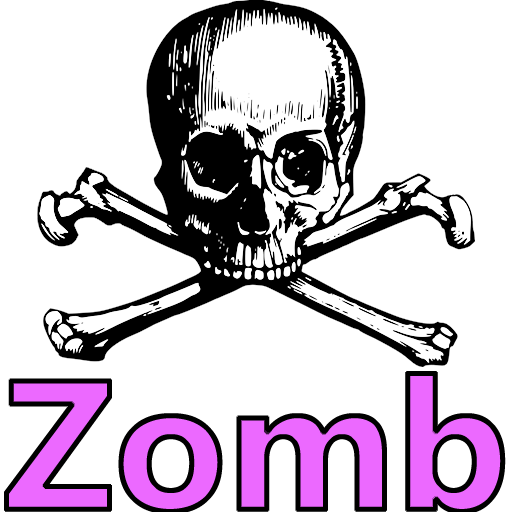 This status effect causes the creature to have their type changed to [Undead], but without any of the benefits of that type. Those inflicted are now damaged by healing spells and effects, including Fast Healing and Regeneration, but immune to death spells and effects. When hit points drops at or below 0 hit points, the status effect is removed and the creature is unconscious. Raise spells and similar effects do not work on those inflicted with this status effect.
This status effect causes the creature to have their type changed to [Undead], but without any of the benefits of that type. Those inflicted are now damaged by healing spells and effects, including Fast Healing and Regeneration, but immune to death spells and effects. When hit points drops at or below 0 hit points, the status effect is removed and the creature is unconscious. Raise spells and similar effects do not work on those inflicted with this status effect.
Harmful Elemental Status Effects
Many of the elemental school spells have specific status effects associated with them, listed below are the common 8 status effects for the 8 elements.
Burning
 A roaring flame surrounds and burns the target. Creatures inflicted with this status take 1d6 + spell level fire damage, and an additional 1d6 + spell level (Fire III inflicts 1d6+3) at the beginning of each subsequent round. Burning creatures may attempt to make a Reflex save (equal to initial DC) to end the burning status at the beginning of their turns before the subsequent damage would take place.
A roaring flame surrounds and burns the target. Creatures inflicted with this status take 1d6 + spell level fire damage, and an additional 1d6 + spell level (Fire III inflicts 1d6+3) at the beginning of each subsequent round. Burning creatures may attempt to make a Reflex save (equal to initial DC) to end the burning status at the beginning of their turns before the subsequent damage would take place.
If the creature is able to find a body of water enough to submerge or cover them, the fire is immediately put out, or they can spend 1 round to stop-drop-and-roll to gain a +4 circumstance bonus on their reflex save to end the status.
Dimmed
A dark mask surrounds the creature’s face, making it difficult to see clearly. Creatures that are inflicted with this status effect suffer a 20% fail chance on all checks and activities that rely on vision (such as reading and Perception checks to spot). The dimmed creature also treats all their enemies as if they had concealment (20% miss chance).
Light spells and effects remove this status effect.
Drenched
Water drenches the creature’s body, soaking the clothing. While under this status effect, any lightning spells and effects inflict an additional 1d6 points of lightning damage on the drenched creature, once per effect. Drenched creatures also receive a penalty on saving throws against ice spells and effects equal to 1/2 the spell level of the spell that inflicted drenched (Water III is -1), minimum -1.
Any fire spells and effects that deal fire damage remove the status effect. By spending 1 round, the creature can also remove the wet clothing as well to remove the status effect.
Frozen
 Ice forms upon the creature’s legs and wings (if any), encasing them in solid ice. Creatures that are inflicted with this status effect are frozen to the spot, unable to move. Frozen airborne creatures are no longer able to hover and immediately fall to the floor, taking falling damage as normal. If a Frozen creature takes falling damage apply the damage to both the creature and the ice (after hardness reductions).
Ice forms upon the creature’s legs and wings (if any), encasing them in solid ice. Creatures that are inflicted with this status effect are frozen to the spot, unable to move. Frozen airborne creatures are no longer able to hover and immediately fall to the floor, taking falling damage as normal. If a Frozen creature takes falling damage apply the damage to both the creature and the ice (after hardness reductions).
The ice has 10 AC, hardness equal to the spell level, and hit points equal to 3 x spell level (Blizzard III has hardness 3 with 9 HP); if broken, the creature is freed. Alternatively, they can break loose by spending 1 round and making a Strength check (DC 10 + SL) or an Escape Artist check (DC 15 + SL).
Fire spells and effects that deal fire damage can melt the ice and remove this status effect.
Illuminated
An illuminated creature shines brightly, allowing others to see them clearly. The creature sheds normal light in a 5-foot radius from themselves, and increase the light level for an additional 5 feet by one step, up to normal light (darkness becomes dim light, and dim light becomes normal light), illuminated creatures take a -20 penalty on all Stealth checks. Due to the shining beacon of light, creatures attacking an illuminated target receive a circumstance bonus to attack rolls equal to 1/2 the spell level of the spell that inflicted the illuminated status (Light III grants +1 attack) minimum 1.
Dark spells and effects remove this status effect.
Squalled
Hurricanic winds circle around the creature, pushing back the creature and making it difficult to hear even themselves as their voice is carried into the squall. Squalled creatures suffer from 10% spell failure for spells with somatic and/or vocal components, automatically fail any Perception checks based on sound, and suffer from a cumulative -1 penalty to attacks made within a round (1st attack is -1, 2nd attack is -2 etc).
Earth spells and effects remove this status effect.
Static
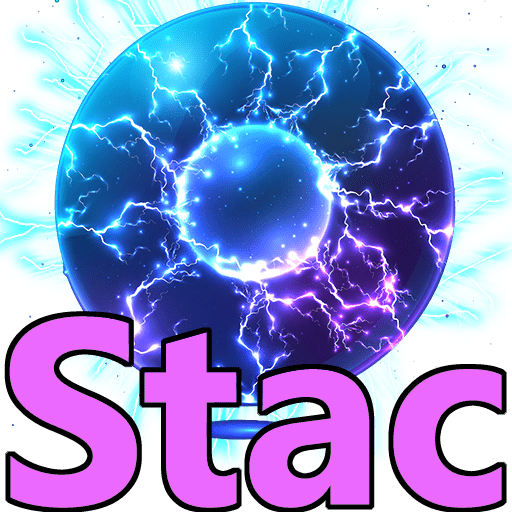 A static charge runs through the creature, making them an excellent conductor for lightning energy. Creatures that are inflicted with this status effect have a 50% chance to receive a jolt (deals 1d6 + spell level points of lightning damage, Thunder III deals 1d6+3) anytime they take a 5-foot step, move, standard, or full-round action. Static can only damage the same creature once per round.
A static charge runs through the creature, making them an excellent conductor for lightning energy. Creatures that are inflicted with this status effect have a 50% chance to receive a jolt (deals 1d6 + spell level points of lightning damage, Thunder III deals 1d6+3) anytime they take a 5-foot step, move, standard, or full-round action. Static can only damage the same creature once per round.
Earth spells and effects remove this status effect.
Weighted
Rocks, dirt, and rubble adhere to the creature, making it difficult to move. Creatures that are inflicted with the Weighted status effect have all forms of ground-based movement halved and cannot run or charge. Weighted creatures cannot ascend higher in altitude (by means of flying, high jumping, etc) with airborne creatures losing 10 feet of altitude every round while under this effect.
Water spells and effects can wash away the status effect.
Beneficial Status Effects
Beneficial status effects occur, usually, when enhancing spells are cast upon the individual or party. These often grant bonuses to stats, armor class, and saving throws as well as other miscellaneous effects.
Float
This status effect gently floats a creature a couple of feet into the air, allowing them to move as if they were grounded. For the duration of this status effect, the subject floats above all surfaces (even water or other non-solid surfaces) and ignores the adverse movement effects of difficult terrain, and can even take 5-foot steps into difficult terrain.
If the subject falls more than 10 feet, he begins to fall slowly, as the choco feather spell, to the ground and this status effect ends, regardless of duration left.
Hasted
 This status effect grants the creature a +1 dodge bonus to AC, +1 bonus to Attack rolls, +1 bonus to Reflex saves, +30 enhancement bonus to movement speed, and an extra attack if the subject uses a full-attack option. Haste counters and dispels slow.
This status effect grants the creature a +1 dodge bonus to AC, +1 bonus to Attack rolls, +1 bonus to Reflex saves, +30 enhancement bonus to movement speed, and an extra attack if the subject uses a full-attack option. Haste counters and dispels slow.
Invisible
 Invisible creatures are visually undetectable. An invisible creature gains a +2 bonus on attack rolls against sighted opponents, and ignores its opponents’ Dexterity bonuses to AC (if any). See the invisibility special ability.
Invisible creatures are visually undetectable. An invisible creature gains a +2 bonus on attack rolls against sighted opponents, and ignores its opponents’ Dexterity bonuses to AC (if any). See the invisibility special ability.
Lucky
This status effect causes you to have lucky on an ability check, a saving throw, or an attack roll. When that happens, you roll a second d20 when you make the roll. Use the higher of the two rolls. For example, roll a 17 and a 5, you use the 17. If multiple situations affect a roll, you don’t roll more than one additional d20. If two favorable situations grant lucky, for example, you still roll only one additional d20.
Protect
This status effect grants the creature a deflection bonus to armor class, depending on the spell used.
Reflect
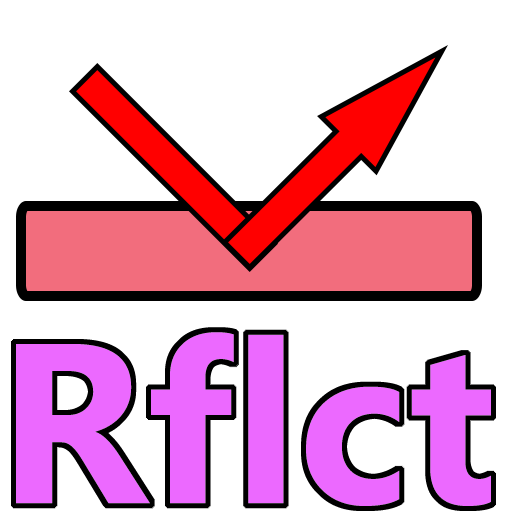 This status effect grants the creature a barrier which spells and spell-like effects targeted on you are turned back upon the original caster. This status effect turns only spells that have you as a target. Effect and area spells are not affected. Reflect also fails to stop touch range spells. From seven to ten (1d4+6) spell levels are affected by the reflect. The exact number is rolled secretly.
This status effect grants the creature a barrier which spells and spell-like effects targeted on you are turned back upon the original caster. This status effect turns only spells that have you as a target. Effect and area spells are not affected. Reflect also fails to stop touch range spells. From seven to ten (1d4+6) spell levels are affected by the reflect. The exact number is rolled secretly.
Regen
This status effect grants the creature Fast Healing, depending on the spell used.
Reraise
This status effect raises the creature from death to 1 HP (as per Raise spell) if the creature dies while this status is in effect. This occurs immediately when the creature dies, though it does not stop them going prone.
Shell
This status effect grants the creature a resistance bonus to saving throws versus spells, spell-like abilities, and supernatural abilities, depending on the spell used.
